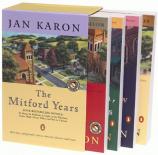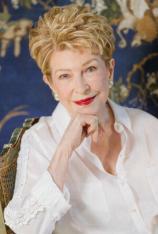Reading Group Guide
Discussion Questions
The Mitford Years Series

1. What role does Barnabas play in Father Tim's life? What other characters seem to invade Father Tim's already busy life, only later to prove enriching elements? Are there any that are a permanent drag on his spirits? How does Father Tim come to terms with them?
2. Dooley appears on the scene untamed and uninvited. What is it that finally makes Father Tim and Dooley aware that they need each other? How does Dooley contribute to Father Tim's life? Have you had "Dooleys" in your own life?
3. Choose two of your group members to read the dialogue between Dooley and Puny in the middle of Chapter Seven – the scene where they first meet. How does the dialect differ in your part of the country? Try reading a brief part of a Dooley speech in the dialect of your own region.
4. Which characters did you dislike at first, only to later come to appreciate or at least understand them? What characters in the book react that way to someone new?
5. Compare Miss Sadie and Miss Rose. They are very different characters, but both make a powerful contribution to the books. What makes them such vivid characters? What would Mitford be like without them? What unique contributions do they make?
6. Priests seldom have people they can confide in. Who are Father Tim's confidants? What secrets does he entrust to them? What role does prayer play in giving Father Tim a chance to truly vent his feelings?
7. "Mitford takes care of its own," says Mayor Cunningham. How does this happen in the book? Is this limited only to small towns? What other types of communities can it take place in?
The Mitford Years Book II: A Light in the Window
8. Why do Father Tim's deepening feelings for Cynthia frighten him so? What are Father Tim's fears about marrying? Is it a good idea for Father Tim to marry Cynthia? How might Father Tim's marriage to Cynthia enhance his role as a priest? How might it detract from it?
9. Minor characters are an important part of the Mitford books. Can you name four minor characters? What does one minor character contribute to the fabric of village life in Mitford?
10. Many people don't like to talk about their faith. Why? Why do you think it is socially permissible to discuss sexual behavior, income, politics, and other highly personal matters, yet discussing one's faith is often discouraged?
11. Compare Miss Sadie's gift of money to build the nursing home with Edith Mallory's promise of donations to the children's hospital. What is each looking for in return for her gift?
12. Jan Karon says there are Mitfords all over the country. Do you live in one? If so, why do you think your community is like Mitford? Is Mitford necessarily a small town? Discuss whether it might also be a close neighborhood in a large city.
13. Have you ever had company like Cousin Meg? How could Father Tim have handled her presence in his house better? How can guests enrich your life? What kind of strain does having guests put on your life?
The Mitford Years Book III: These High, Green Hills
14. How has Father Tim's marriage influenced or changed his life? How have his relationships with Barnabas, Dooley, and Miss Sadie changed him?
15. Do Jan Karon's characters remind you of people you know? Have you ever lived next door to a Mitford character? Are you kin to any of the Mitford characters?
16. Faith in God is clearly a significant part of Father Tim's makeup. How would you describe his faith? What role does prayer play in Father Tim's faith?
17. The Seven Virtues are: Faith, Hope, Charity, Prudence, Temperance, Fortitude, and Justice. Choose a character that exemplifies one of these virtues. For example, what virtue do you feel Uncle Billy exemplifies? What about Miss Sadie? Olivia?
18. What did Father Tim and Cynthia learn about themselves when they were lost in the cave? What did they learn about each other? What did Father Tim learn about his relationship with God? How did understanding and forgiving his father change him?
19. What gifts did Sadie Baxter give Dooley? Did her bequest surprise you? Why did she choose Dooley?
The Mitford Years Book IV: Out to Canaan
20. In times of crisis, Father Tim and Cynthia pray "The prayer that never fails." What prayer are they referring to? Why is it a prayer that never fails?
21. Pauline's growth and redemption is a gradual, step-by-step process. Who helps her? Where does Pauline succeed? Where does she fail?
22. Father Tim's home is transformed from staid bachelor quarters into a topsy-turvy household. Lace quizzes Harley on his schoolwork in the basement, Dooley pounds up the stairs, Puny cleans with her twins underfoot, Violet the cat balefully eyes Barnabas from atop the refrigerator. How does Father Tim's household compare with your own? Do Jan Karon's descriptions make you view the chaos in your life differently?
23. The construction boss, Buck Leeper, is a diamond in the rough. In Out to Canaan, what is Buck Leeper feeling? How does he view himself? How do you think he may view others?
24. Note the ongoing presence of children and the elderly in the Mitford books. How does this enhance these stories? What lessons do they teach Father Tim?
25. Why does Father Tim have such trouble going to Fancy Skinner, Mitford's unisex hairdresser, for his haircuts? Who does he press into service to cut his hair when he is avoiding her shop? Choose one of your group members to read the monologue by Fancy found toward the end of Chapter Five.
26. Do you have a Main Street Grill? What function does a place like the Grill fill in a town? Where do you get your town news? Where are you likely to meet friends and neighbors?
27. Esther Bolick's orange marmalade cake plays a role in each book. What is the specialty in your region? What food item makes an annual event special? Festive? What other object can fill this role?
28. Describe the ways in which those who come in contact with Father Tim are changed. How does contact with others change Father Tim?
The Mitford Years Series
- Publication Date: April 1, 1999
- Paperback: 1 pages
- Publisher: Penguin (Non-Classics)
- ISBN-10: 0147712564
- ISBN-13: 9780147712561







